She enters a mosque, and she looks for quiet, old bricks. She departs, and the place surprises her – it seems active. This describes Wazir Khan Mosque – it is more than just an old building. The mosque shows many colours plus details from the Mughal period – it stands in the middle of Lahore’s Walled City, just past the Delhi Gate, near the Shahi Guzargah. Wazir Khan, who people also knew as Hakim Ilam-ud-din Ansari, put up this structure in the 17th century. The building work took place from 1634 to 1641. He worked as the head doctor for Emperor Shah Jahan.
He might read online that it’s “beautifully decorated.” But she’ll see it—the tile work is so rich it looks like the walls breathe. The Quranic verses, colourful patterns, and peaceful vibe turn a visit into something spiritual and memorable.
Table of Contents
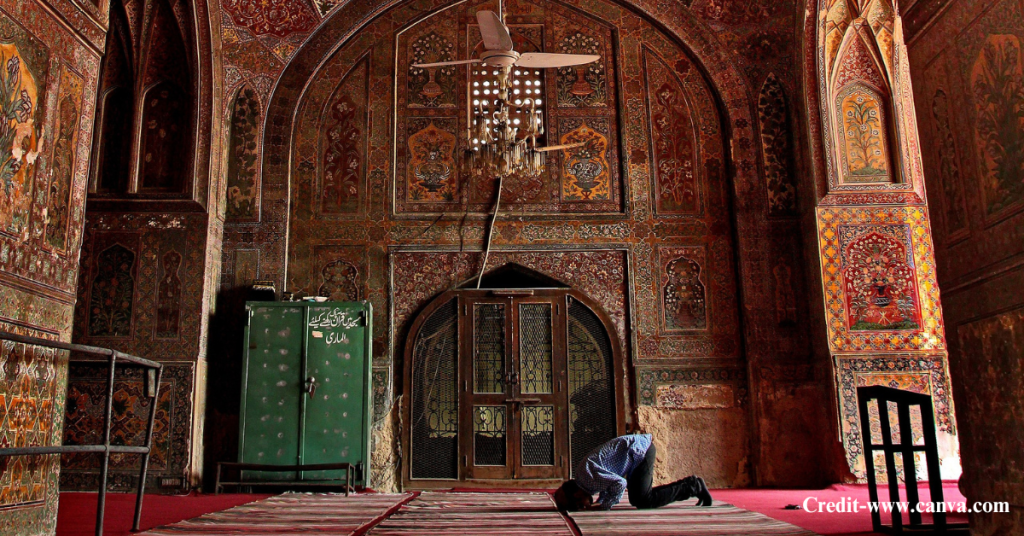
Wazir Khan: The Man and His Plan
Wazir Khan wasn’t just some royal worker. He was Shah Jahan’s trusted physician who turned to building something big—a mosque that would also support spiritual life in Lahore. He picked the site for a reason: it’s built around the tomb of the Sufi saint Miran Badshah.
To make sure the mosque could keep running, he set up shops along the way—calligraphers, bookbinders, and more. Their rent money helped support the mosque. That’s what we now call the Calligrapher’s Bazaar. Most tourist guides only give it a line or two. But it deserves more. It’s a mix of history, economy, and culture that still works today.
Some say Wazir Khan built it for blessings. Others whispered that a curse followed anyone who didn’t respect the sacred ground. Whether true or not, stories like these give the mosque even more depth and show how much it means to locals.
Design That Stuns: Structure and Decoration
He will count five domes and four minarets. Each stands 107 feet high. The courtyard is big, measuring 282 by 165 feet. Workers built the mosque with brick and lime mortar – it does not contain modern cement. Builders constructed it in an old way, but it still stands well.
Colour and Detail Everywhere
She will notice the Persian-style tile work immediately. Bright blue, mustard yellow, and dark green colours cover almost every surface. There is no empty space. Even the ceilings have decoration.
One finds mosaic frescoes – these show trees, fruits, wine platters as well as other images, all mixed with Quranic verses. Scribes wrote these verses in flowing Naskh in addition to Nastaliq scripts. Every part of the mosque shows a story, and art covers that story.
Early Use of Smart Design
They will also observe something not often present in most mosques – muqarnas squinches. These shapes hold up the domes; they were some of the earliest of their type in South Asia. They do not only serve a purpose – they also look nice.
Even the brick layout shows purpose. Lines and patterns were placed not just for strength but to create harmony. That harmony creates calm, even when the courtyard is full.
Built for the Soul: Sound and Space
Most people miss how carefully this mosque was built to fit spiritual needs. It’s not just about space. It’s about how that space feels.
He’ll notice how his voice echoes gently across the prayer hall. That’s not an accident. The floor and walls were designed to keep things peaceful and calm.
She’ll think about how the layout—the symmetry and shape—was planned to feel balanced. It follows sacred geometry, but not in a dry, math-heavy way. It works. And it works well.
The bricks under your feet matter. If you walk without shoes, you will feel the history; they get warm in the sun and cool in the shade, plus each piece forms a part of the whole.
A Mosque That Still Lives
Before the Badshahi Mosque was even built, this was the go-to spot for big Friday prayers. Back then, rulers and saints came here. Today, it’s still busy.
Worshippers pause at the tomb of Miran Badshah. Vendors laugh and shout just outside the mosque. Kids run through the open spaces. It’s not just a photo stop. It’s a working, living part of the city.
This makes it different from so many other historic places. The Wazir Khan Mosque did not freeze in time – it holds a place in common life.
If a person does not follow a religion, the place causes him to move more slowly. A quiet calm comes over him in a way he does not expect in Lahore, a city with much activity.
What’s Around: Wazir Khan and the City
Right next door is the Shahi Hammam—a public bathhouse from 1635. It had hot, warm, and cold rooms. Restored between 2013 and 2015, it even won a UNESCO award. Most travel blogs just mention it, but it’s worth a stop.
Then there’s the Wazir Khan Chowk. The government laboured to mend the site from 2015 to 2017. Crews moved shops below ground. Workers scrubbed the walls clean. The old Dina Nath Well then returned to its former state. The entire square became a public gathering place, as it had been before.
A person may also go to the Delhi Gate nearby. The Lahore Fort is also closed. Locals also offer vibrant bazaars, which still sell handmade goods. People also buy old books and prayer mats, along with fresh snacks, at the bazaars.
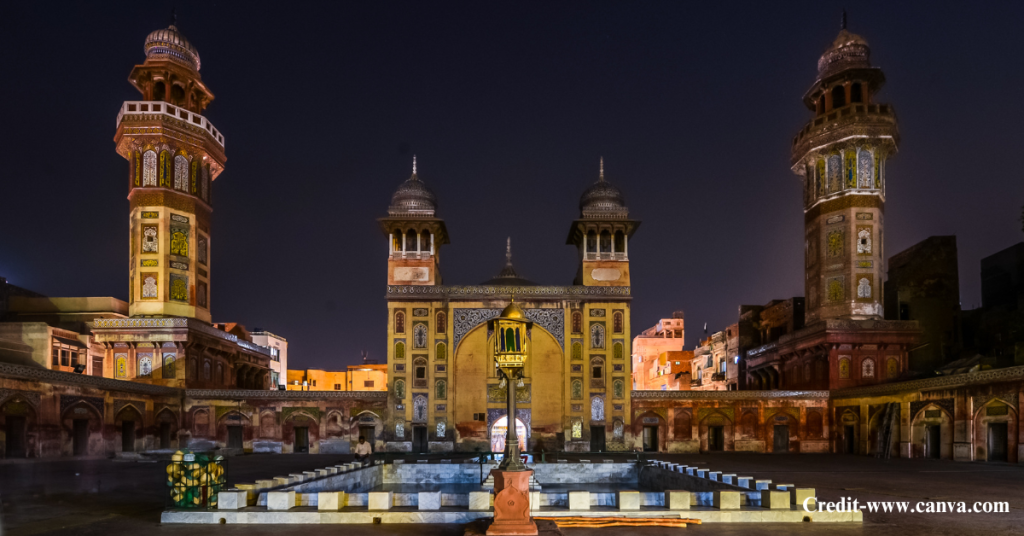
Fixing the Past: Conservation Work
In 2009, a large team began to save this site. The Aga Khan Trust for Culture, the Government of Punjab, and help from Germany, Norway, and the USA cooperated.
The team used 3D scans, laser tools, and local experts from LUMS to record each tile and crack. This became a very technical restoration job in South Asia.
Problems arose. The minarets began to lean. Arches showed cracks. Pigeon waste and moist air harmed the tiles. The team mended plaster, fixed drains, and moved power lines below ground.
City growth presents difficulties. Higher street levels press against the walls. New buildings stand close to the area. And government delays complicate the work.
Most articles do not mention these real issues. But they matter; they are why conservation continues, not finishes.
And the work is not only technical. Craftspeople relearned old skills. They made tiles by hand, mixed old-style plaster, and painted as the Mughals did. That sort of work keeps a site. That’s the kind of work that keeps a place truly alive.
Planning Your Visit
Best Times to Go
Try early morning or just before sunset. The crowds are smaller, and the sunlight makes the colours pop. Nights during Ramadan? Pure magic.
What to Wear
Dress modestly. Cover your shoulders and ankles. Women should bring a headscarf. Leave your shoes at the gate—a small tip keeps them safe.
What to Know
- You can take photos, but no tripods or drones.
- Some parts are under repair, so follow the paths.
- There’s an ablution pool if you want to perform wudu.
What’s Nearby
- Delhi Gate
- Lahore Fort
- Badshahi Mosque
- Shahi Hammam
- Dina Nath Well
- Calligrapher’s Bazaar (great for chai and handmade items)
Local Tip: After sunset, grab a chai from the vendor just outside Delhi Gate. It’s cheap and perfect.
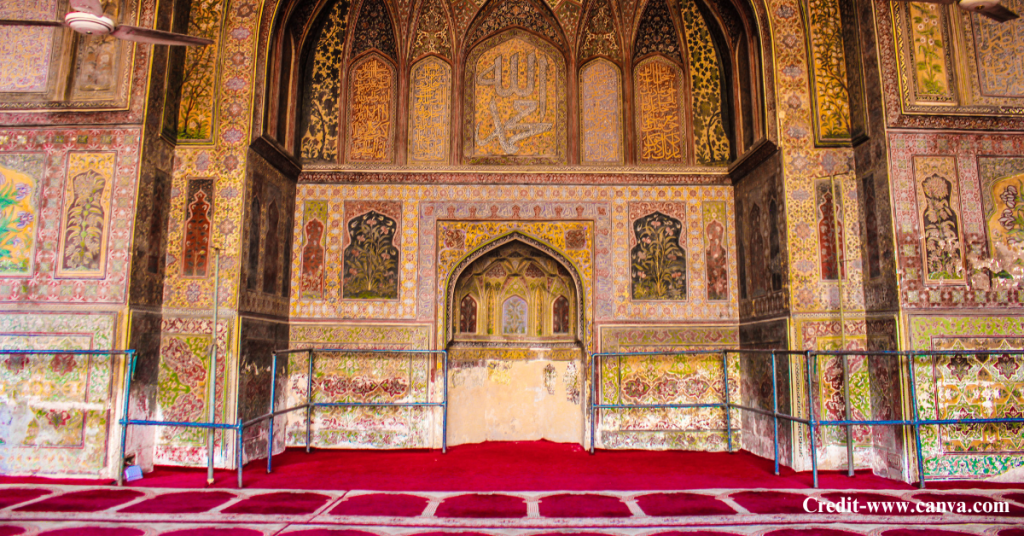
What Other Guides Miss (That You Now Know)
They Talk About:
- History and construction dates
- Architecture (domes, minarets, tile)
- Some mention of restoration
- Basic tourist tips
But They Leave Out:
- Acoustic design and sacred geometry
- The role of local vendors and bookbinders
- Saint stories and local legends
- How 3D scanning and laser tools helped fix the mosque
- Real city problems like street level and encroachment
- Quotes and voices from people who helped in conservation
- Hand skills revival and craftspeople involved
By looking at all this, you don’t just get a guide. You get the full picture.
FAQs
What other places can someone see near Wazir Khan Mosque?
The Shahi Hammam, the Delhi Gate, the Lahore Fort, along with the Badshahi Mosque, sit close by. The Dina Nath Well and the Calligrapher’s Bazaar are also nearby.
Who is the holy person buried at Wazir Khan Mosque?
The mosque stands around the grave of Miran Badshah, a Sufi saint. Many people from the area visit his grave inside the mosque to say prayers and to think.
How does someone keep the Wazir Khan Mosque in good condition?
Workers started repairs on the mosque in 2009. The Aga Khan Trust for Culture, the Government of Punjab, and partners from other countries contributed; they used scans from a 3D scanner, along with old building methods. Local skills helped to prevent the building from falling apart.
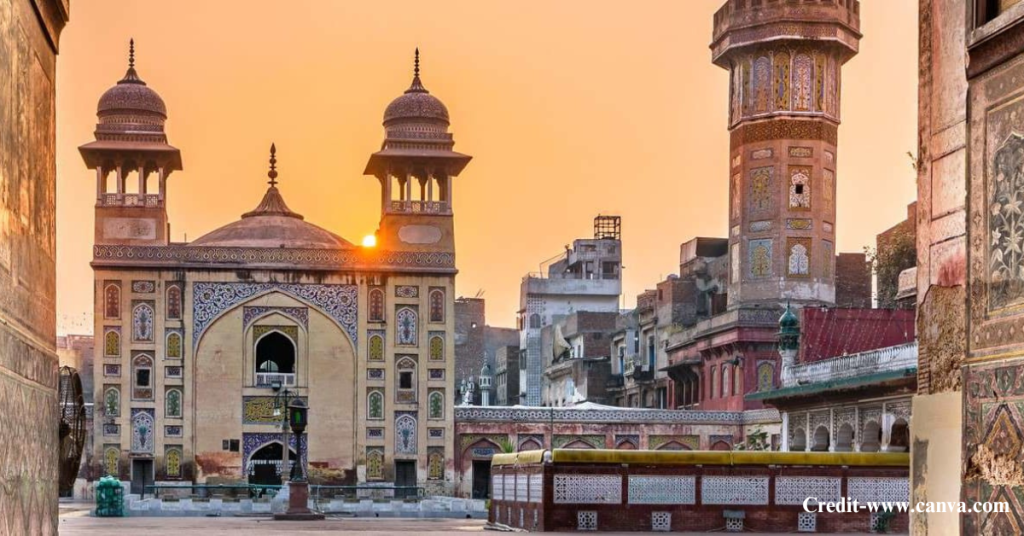
Final Thoughts
She walks into the courtyard and senses the past beneath her feet. He looks up plus notices colours that did not fade over centuries. Both leaves changed. This place is not only about bricks plus tiles – it shows a connection to faith, art, and Lahore. The Wazir Khan Mosque is more than a place to visit. It is a tale that people still write, through paint, prayer, as well as daily life. You should go. Observe. Pray. Listen. And tell others. You will not only see the mosque. You will sense it.

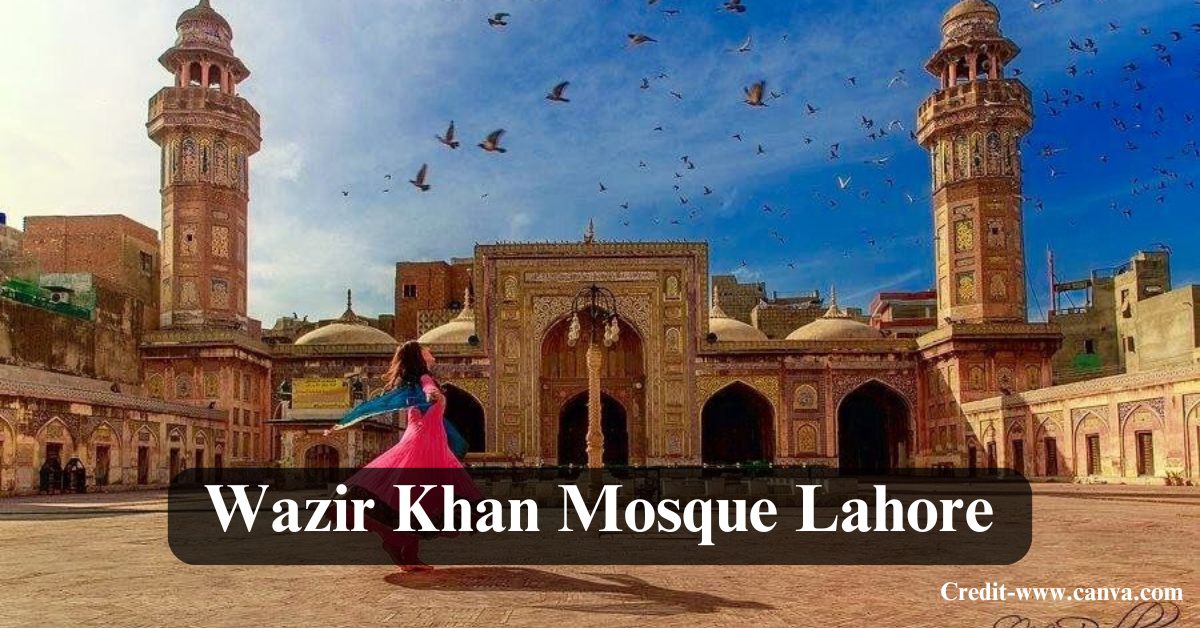
I like how you’ve structured this article with clear headings and subheadings, which makes it easy to follow. Your writing style is very approachable and friendly.